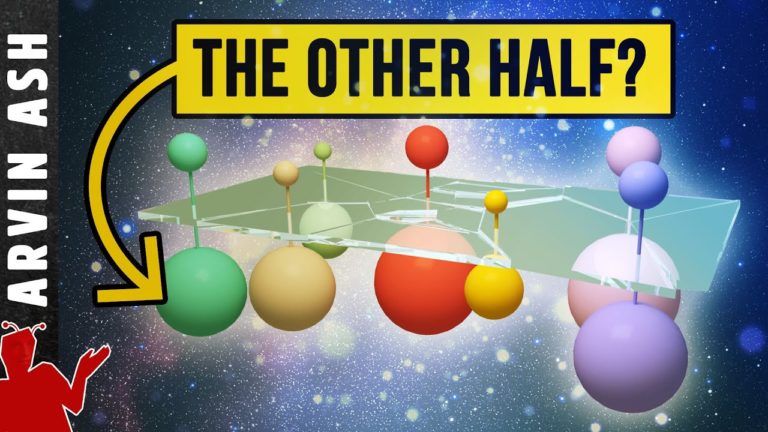Have we Discovered Only Half of Physics? The Hidden Supersymmetry
We explain what supersymmetry is, why physicists think it should exist, why we haven’t discovered it, and why it is necessary.
There’s a theoretical idea that could get us closer to a theory of everything, and could fix gaps in the standard model – supersymmetry, which is the idea that matter particles and force carrying particles are connected through a new kind of symmetry. Although there’s no experimental confirmation of this symmetry, it’s still important because in physics, symmetries can be broken. And a broken supersymmetry could still explain a lot.
Supersymmetry is important because if it’s true, it could solve a few problems in physics:
1) it could explain the hierarchy problem with the Higgs boson – why it has a such a low mass.
2) it could unite 3 of the fundamental forces – the strong force with the electroweak force, and
3) it could provide a perfect candidate for the dark matter particle.
What is supersymmetry? Why is this idea important?
A symmetry in physics exists if you can make a change and that change makes no difference. The physics governing the laws of the universe seem to be based on symmetries. Several fundamental symmetries exist in nature, including charge, parity and time.
Charge symmetry means that if you flip the charges of all the particles in an interaction, you’ll get the same interaction. Parity is if you look at the mirror image of an interaction, you get the same result. And time symmetry is when you run an interaction backward in time, it looks the same. Together, they are called CPT for charge, parity, and time. Physicists have never observed a violation of all three symmetries (CPT) at the same time.
Symmetries are important in finding a theory of everything because if we find that the universe obeys certain symmetries, then this would limit the number of ways that the universe could be organized.
Supersymmetry, or SUSY, is a symmetry between matter particles and force particles. The key difference between these two types of particles is spin. All matter particles have a spin of ½. All Bosons in the have a spin of 0 or 1.
What is spin? Spin doesn’t mean that the quantum object is spinning like a planet. It is related to the way particles are deflected through a magnetic field. They act like a spinning magnet, but that is probably not actually what’s physically happening.
It seems a bit arbitrary that there should be many more matter particles than force carrying particles. Why should the universe favor matter over the forces? If SUSY exists, then each fermion has a supersymmetric counterpart that is a boson. And all mirror particles of the bosons would be fermions.
The naming convention for the supersymmetric counterparts of the fermions is that we add an “s” in front of the names of the quarks and leptons. Likewise, the mirror particles of the bosons, which are fermions gets a suffix “ino”.
What is the point of all this? Is it really important that there are an equal number of bosons and fermions? We cannot be sure of that. But there are some reasons why such a theory could be desirable.
It would solve the low mass problem of the Higgs boson.
It would unify 3 fundamental forces: electromagnetism, the strong and the weak force.
It provides a solution to dark matter.
supersymmetric particles are probably very massive because if they were light, we would have detected them in particle accelerators by now, given the energies we can produce. Since we haven’t detected them, scientists believe that they must have more energy (or mass) than can be produced at our most advanced particle accelerator, the LHC – perhaps 1000X or more than the mass of the proton.
Shouldn’t supersymmetric particles have a mass just like ordinary particles, but just with different spins? Well, in physics symmetries can be broken. This is true for the electroweak force.
The idea is that “superness” could be a conserved quantity, like charge or energy. Superpartners would then not be able to decay to the ordinary fundamental particles of the standard model that we see. So they would be stable.
There are two good reasons why we haven’t detected them. The first reason is that they may be too heavy. The second reason is that they could be very weakly interacting, so we may have produced them but not detected them.
Do not forget to share your opinion with us to provide you with the best posts !




0 Comments